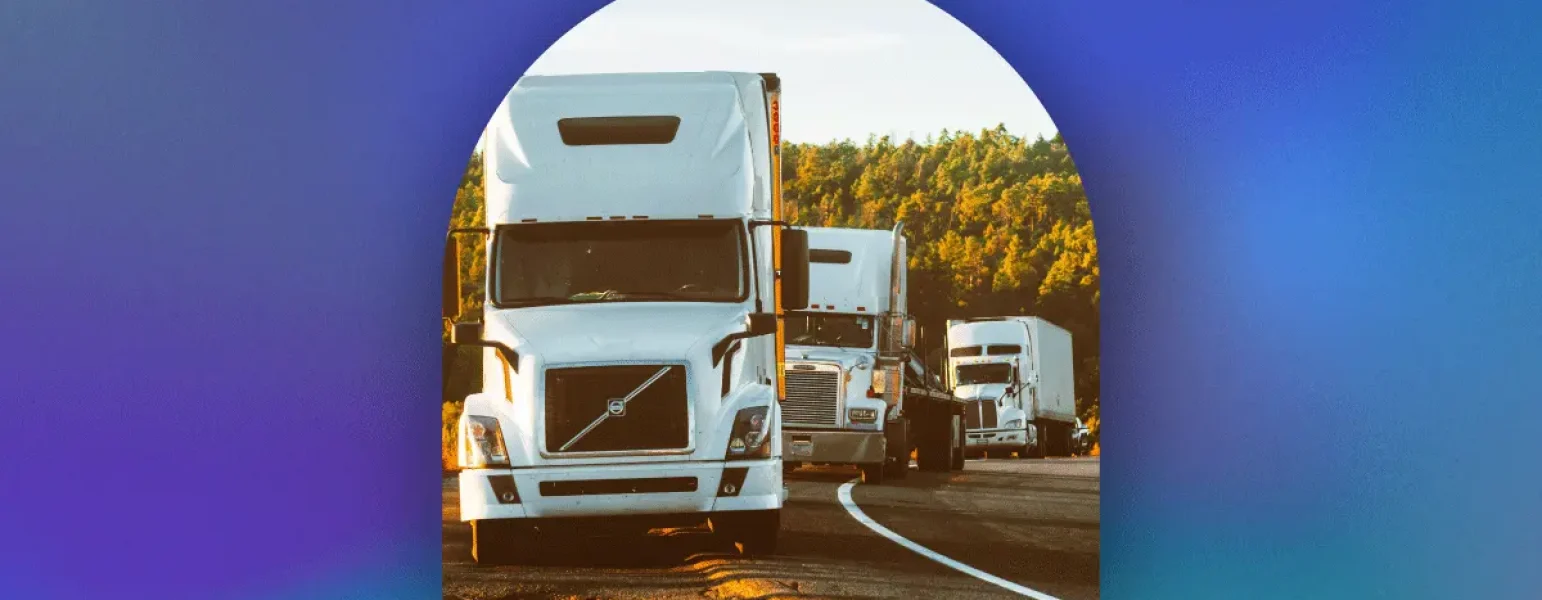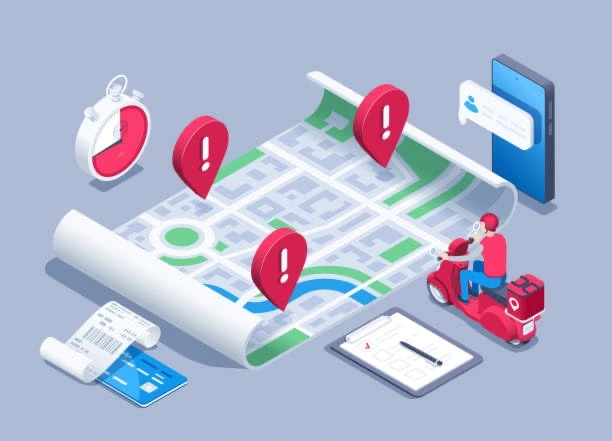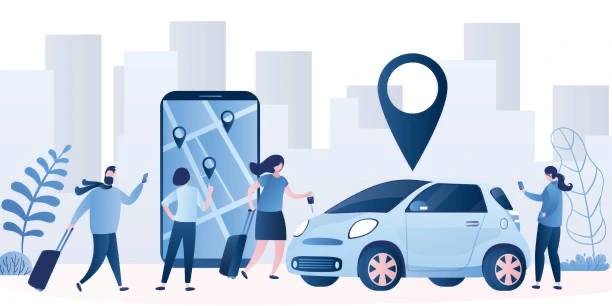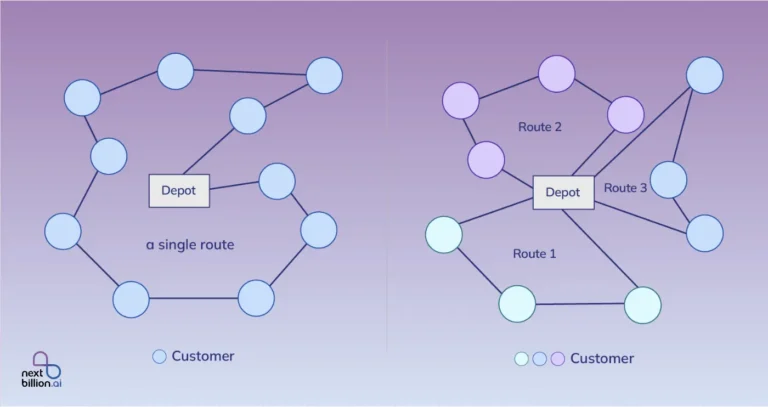
Table of Contents
Transportation Management Systems (TMS) serve as centralised platforms facilitating collaboration across the supply chain management systems for executing transportation and distribution processes. Some of the key stakeholders using TMS may include shippers, carriers, warehouse officials, freight brokers, and supply chain managers. TMS enhances operational visibility by providing insights into daily transportation activities and ensuring punctual delivery of freight and goods. TMS streamline the shipping process by optimising transportation operations across various modes of transport, including land, air, and sea.
TMS focuses specifically on optimising the flow of physical goods both inbound and outbound across the supply chain network by integrating with procurement and shipping software. Additionally, TMS integrates with Software-as-a-Service (SaaS) products to leverage features such as predictive analytics, inventory management, and shipment forecasting.
TMS is sometimes referred to as Transportation Management Solution or Transportation Management Software.
Now that you already are aware about what a Transport Management System is, I will take you through other aspects of TMS such as its challenges, benefits, features, how it works, where it is used, and so on.
What are the challenges with the Transport Management System?
Implementing and operating a Transport Management System (TMS) comes with several challenges that organisations need to address.
Some of the key challenges may be integrating with the existing enterprise systems, data accuracy and consistency, adopting new TMS software, initial investment, global operations and compliance, visibility, data privacy and so on.
Let’s understand the challenges in brief…
Integration Complexity
Integrating TMS with existing enterprise systems like ERP (Enterprise Resource Planning), warehouse management systems (WMS), and supplier/customer platforms can be both complex and time-consuming. Achieving seamless data flow and compatibility across these systems is essential for optimal operational efficiency. Staying current with technological advancements, such as IoT (Internet of Things) for asset tracking and AI (Artificial Intelligence) for predictive analytics, requires ongoing updates and integration efforts to fully leverage emerging technologies within TMS.
Missing Features
A major challenge with TMS is the absence of certain critical features that may be vital for specific operations or industries. For instance, a TMS without advanced analytics for predictive routing or integration with emerging technologies like IoT may hinder its ability to fully optimise transportation operations.
Data Accuracy and Consistency
TMS depends on precise and consistent data inputs for effective route planning, load optimization, and tracking. Inaccurate or incomplete data can result in suboptimal decisions and operational disruptions. Additionally, TMS manages sensitive information about shipments, routes, and customers, making robust cybersecurity measures and compliance with data privacy regulations (e.g., GDPR, CCPA) crucial to safeguard against cyber threats and uphold stakeholder trust.
According to Gartner, poor data quality costs organisations an average of $15 million per year. Inaccurate data in transport management can lead to delays, incorrect routing, and inefficient resource allocation.
System integration issues: Data discrepancies between different systems (e.g., ERP, GPS tracking, scheduling software).
User Adoption and Training
Implementing a new TMS requires training for staff across multiple departments, including logistics, procurement, and IT. Challenges such as resistance to change and the learning curve associated with new software can impact user adoption and initial productivity.
Cost Management
Although TMS can lower transportation costs through optimization and efficiency improvements, the initial investment and ongoing maintenance expenses can be substantial. Organisations must carefully weigh these costs against the anticipated benefits and return on investment (ROI).
Here are some of the statistics gathered on cost management:
- Fuel represents approximately 40% to 60% of total transportation expenses.
- Labour costs, encompassing driver wages and benefits, constitute 20% to 30% of total transportation expenses.
- Regular vehicle maintenance typically accounts for 10% to 15% of total transportation costs.
- Administrative tasks, such as paperwork and compliance management, can account for 5% to 10% of total transportation costs.
- Freight costs, which generally comprise 30% to 50% of total transportation expenses, can vary significantly.
- Empty miles, or deadhead miles, can account for up to 15% to 20% of total miles travelled.
- An effective TMS can lower carbon emissions by 10% to 20% through optimised routing, load consolidation, and improved vehicle utilisation, promoting both sustainability and cost savings.
- Using a TMS can enhance on-time delivery performance by 10% to 15%, resulting in higher customer satisfaction and fewer penalty costs.
- Improved visibility and real-time tracking in TMS can reduce inventory carrying costs by up to 20% by minimising buffer stock and improving order accuracy.
- Automation through TMS can lead to efficiency gains of 20% to 30%, reducing manual errors and streamlining operations.
Scalability and Flexibility
As business needs change and transportation volumes fluctuate, TMS must be scalable and adaptable to support growth and evolving operational requirements. This includes managing peak periods, new transportation routes, and expanding supplier and customer networks.
Visibility and Transparency
Attaining end-to-end visibility across the supply chain remains challenging, especially when managing multiple carriers, third-party logistics providers (3PLs), and various transportation modes. Limited real-time visibility can impede proactive decision-making and responsiveness to disruptions.
Insufficient Information
TMS depends on accurate and comprehensive data inputs for effective decision-making. Insufficient or incomplete information about shipment details, customer requirements, or real-time traffic conditions can result in suboptimal route planning, delays, and increased operational costs.
Load Management Issues
Efficient load management is essential for maximising transportation capacity and minimising costs. TMS must accurately determine load requirements, manage weight distribution, and optimise load planning to avoid underutilizing transportation resources or encountering overloading issues that could affect compliance and safety.
Poor Interface Design
User interface (UI) and user experience (UX) design are pivotal for the adoption and effectiveness of TMS. Interfaces that are unintuitive, cluttered, or difficult to navigate can result in user errors, longer training periods, and decreased productivity. A well-designed interface should focus on ease of use, clear navigation, and accessibility to key functionalities.
Global Operations and Compliance
Managing transportation across international borders requires navigating complex regulations, customs procedures, and trade compliance requirements. TMS must support global operations by ensuring compliance with local laws and regulations while facilitating efficient cross-border movements.
Here are some of the statistics gathered on global operations and compliance:
- In 2020, the global TMS market was valued at approximately USD 7.25 billion and is projected to grow to USD 19.14 billion by 2027, with a CAGR of around 14.2% from 2021 to 2027.
- More than 60% of global trade consists of cross-border shipments, highlighting the need for advanced TMS capabilities to handle customs clearance, documentation, and compliance efficiently.
- By 2030, Global freight volume is expected to grow by 70%, driven by the rise of e-commerce and expanding supply chains.
- TMS can assist companies in meeting environmental regulations like the IMO 2020 sulfur cap by optimising routes and enhancing fuel efficiency, potentially reducing emissions by up to 20%.
Addressing these challenges requires a strategic approach involving cross-functional collaboration, ongoing training, investment in technology infrastructure, and partnering with reliable TMS providers or consultants to optimise implementation and operation.
How to Optimize a Transport Management System?
NextBillion.ai addresses TMS challenges with a cutting-edge approach, offering advanced solutions in mapping, routing, and location intelligence.
NextBillion.ai is a deep tech provider specialising in API and SDK-based location technology, designed to help organisations optimise their logistics operations through advanced AI-driven solutions. It is an artificial intelligence (AI) platform that enables customers to develop AI-powered hyperlocal applications without the need for infrastructure investments.
NextBillion.ai is a comprehensive geospatial platform that enables businesses to build, scale, and manage their own mapping ecosystems, leveraging AI to optimise solutions for various use cases and regions.
NextBillion.ai’s Route optimization is the process of determining the most efficient routes for a fleet of vehicles to deliver goods or services. It involves using advanced algorithms to analyse multiple variables, such as delivery locations, vehicle capacities, time windows, and real-time traffic conditions, to minimise travel distance, time, and costs while meeting all delivery constraints.
You can solve your TMS challenges and problems by embedding NextBillion.ai Route Planning APIs into your TMS or logistics SaaS solution.
NextBillion.ai has assisted numerous companies in achieving notable results, such as reducing delivery times by 30% and fuel costs by 25%. Our expertise and proven success stories demonstrate how effective route optimization can significantly transform your business.
Here’s how users can address some common TMS challenges using the NextBillion.ai products and services:
1. Route Optimization: Inefficient routing leading to higher fuel costs and longer delivery times.
You can use NextBillion.ai’s custom map data tailored to specific business needs, considering factors like vehicle type, load, road restrictions, and real-time traffic conditions. You can also Implement dynamic routing that adjusts in real-time based on traffic updates, road closures, and other variables to find the most efficient paths. With NextBillion.ai you can optimise routes for deliveries with multiple stops, ensuring the most efficient order of deliveries to save time and fuel.
2. Real-Time Tracking and Visibility: Lack of real-time visibility into vehicle locations and delivery statuses.
With NextBillion.ai you can leverage real-time tracking to monitor vehicle locations, providing up-to-date information on delivery statuses and estimated arrival times. You can use geofencing to receive alerts when vehicles enter or leave predefined areas, enhancing operational control and security. You can access comprehensive dashboards and reporting tools to gain insights into fleet performance, driver behaviour, and delivery timelines.
3. Cost Management: High transportation costs due to inefficiencies and lack of cost control measures.
Fuel costs can be reduced through optimised routing and real-time traffic avoidance. Implement predictive maintenance schedules based on route and usage data to prevent costly breakdowns and extend vehicle life. You can monitor and improve driver efficiency by analysing driving patterns and identifying areas for improvement.
4. Compliance and Risk Management: Navigating complex regulatory environments and managing risks associated with transportation.
NextBillion.ai ensures compliance with local, national, and international regulations by incorporating specific regulatory requirements into routing and planning. With NextBillion.ai you can receive real-time alerts for potential risks such as adverse weather conditions, road closures, and other disruptions to proactively manage and mitigate risks. NextBillion.ai maintains detailed audit trails of routes and deliveries to ensure compliance with regulatory standards and facilitate easier audits.
5. Integration and Scalability: Integrating TMS with other systems and scaling operations as the business grows.
Seamless Integration, Scalable solutions, and API access are some of the NextBillion.ai’s solutions for integration and scalability issues. You can Integrate NextBillion.ai with existing TMS, ERP, WMS, and other systems to create a cohesive and efficient operational workflow. NextBillion.ai effortlessly accommodates business growth, ensuring that mapping and routing capabilities expand as the fleet and delivery volumes increase. With NextBillion.ai you can utilise robust APIs to customise and enhance TMS functionalities according to specific business requirements.
6. Enhancing Customer Experience: Providing accurate delivery estimates and improving customer satisfaction.
NextBillion.ai provides customers with precise estimated time of arrivals (ETAs) by using real-time data and optimised routing algorithms. Keeps customers informed with automated notifications about delivery statuses and any changes in ETA. Implements proof of delivery (POD) solutions that provide digital confirmation of delivery, enhancing transparency and trust.
By leveraging NextBillion.ai’s advanced mapping and location intelligence solutions, users can effectively tackle the various challenges associated with transport management systems. From optimising routes and managing costs to ensuring compliance and enhancing customer experience, NextBillion.ai provides comprehensive tools to improve efficiency, reduce costs, and streamline operations in TMS.
What are the Use Cases of Transport Management System?
1. Medical Test Sample Collection from Home Routing Issue
Health care organisations are adopting home care solutions to deliver services to their communities. A highly demanded service among these is the collection of medical test samples, particularly blood and urine, as prescribed by medical doctors. Providing such a service requires efficient coordination and planning. This management task involves solving a complex vehicle routing problem due to the numerous and unique constraints involved. Ensuring a healthy and timely sample is crucial for accurate analysis.
A delay in delivery of the sample may compromise quality and storage conditions of the sample, which may require additional samples, leading to longer turnaround times as testing cannot begin until the new samples are received. Various factors including packaging, labelling, location, transport mode etc collectively form a complete cycle of sample collection and its delivery. Any hindrances from these could hamper the sample and its effectiveness leading to dangerous outcomes. Therefore, implementing Routing optimization is a wise move.
NextBillion.ai’s Field Service Route Optimization solution is hence tailored to the customer’s field service operation needs. For more information, please refer Field Service Route Optimization: How NextBillion.ai Helped Health-Tech Firm Improve Sample Collection Schedules and Achieve 25% Cost Savings.
2. Food/Meal Delivery Routing Issue
The meal delivery routing problem is one of the common challenges faced in the e-commerce platform. To reduce logistics costs and satisfy customer demands, a multi-objective approach is taken to address this issue. This involves third-party logistics providers coordinating vehicles across multiple depots to pick up meals from various food providers and deliver them to customers. Several shared logistics services among food providers are being optimised. It is crucial to meet customer time requirements as efficiently as possible.
Third-party logistics providers must ensure timely delivery of quality food. This involves optimising routes, schedules, and staffing, which is complicated by factors such as traffic conditions, travel distances, and the necessity to maintain specific temperatures for perishable items. Keeping pace with emerging customer demands is a pressing challenge. Meanwhile the food packaging must not be hampered. These challenges require continuous attention, innovation and optimization to ensure efficient and reliable service while minimising costs and maintaining customer satisfaction.
NextBillion.ai’s Food/meal delivery optimisation solution is hence implemented to achieve excellent results in serving customers with timely delivery of fresh and high quality food. For more information, please refer A Top US-Based Food Delivery Company Increases Delivery Delight.
3. Ride-sharing Routing Issue
Ride-hailing companies face the challenge of maintaining profitability while offering low costs to riders. They must balance operational expenses with the need to provide affordable prices. Additionally, ensuring the privacy and security of user data presents a significant challenge, requiring robust measures to protect sensitive information.
Metropolitan cities experience severe traffic congestion. This complicates route planning and can lead to delays, reducing the efficiency and appeal of carpooling services. Selecting multiple customers from within a range and optimising the routes in compliance with the nearest and farthest distance and analysing the drop-off order for the customers is a tedious job. There can be times when the matrix has taken incorrect input and resulted in wrong analysis of pick-up, route selection, and drop-offs.
NextBillion.ai’s Ride-Share optimization solution enables customers to have a smooth and satisfactory ride. For more information, please refer to Ride-Share Company Enables Faster, More Accurate Routing for Multiple Drop-Offs.
Getting Started with NextBillion.ai’s Transport Management System
Transport Management System (TMS) is crucial for businesses such as shippers, carriers, warehouse officials, freight brokers, and supply chain managers that are across supply chain management systems for executing transportation and distribution processes.
By using Nextbillion.ai’s Transport Management System, you can streamline the transportation/shipping process by optimising transportation operations. You can explore and exploit Nextbillion.ai’s services such as custom map data, real-time tracking, cost and risk management services, and above all best customer service.
Whether you are using land, air, or sea mode of transportation, Nextbillion.ai’s Transport Management System (TMS) is a one-stop solution to make your transportation business emerge with quality and ease.
About Author
Prabhavati is a freelance technical writer based in India. She has diverse experience spanning more than 10 years.










